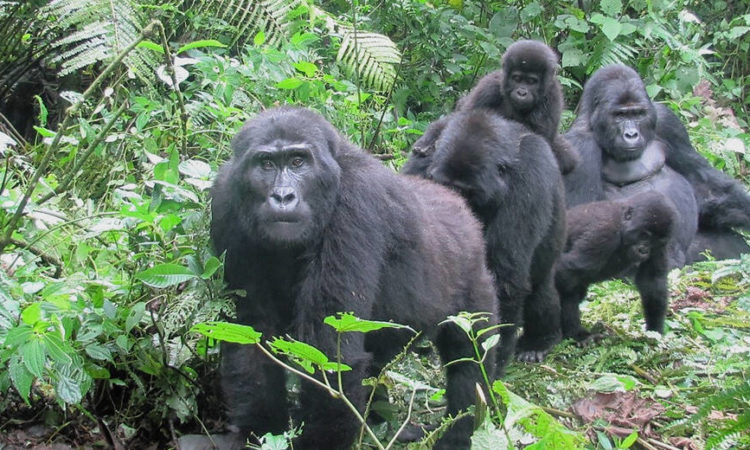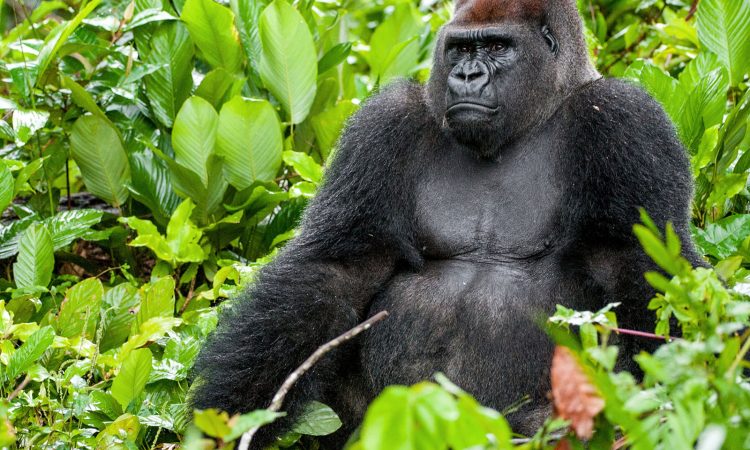
Mountain gorilla population
Mountain gorilla population : Mountain gorillas are one of the jewels of the Eastern Africa and these wild animals are quite fascinating creatures thus the popularity. The mountain gorillas have been a known existence since the 17th of October in the year 1902 and these are a sub species of the eastern lowland species of the gorilla genus. The mountain gorilla has a physic close to the other gorilla sub species but these have thicker and longer hair, jaws and teeth as well.
The body of the mountain gorilla is thicker than the lowland gorillas with shorter arms and all these gorillas share a common trait where the older males tend to grow a silver or rather a grey line of hair on their lower backs and sometimes further to their hips and these are known as the silverback gorillas. For an adult male gorilla, the average weight ranges around 160 kilograms while the adult females weigh about 98 kilograms.
The mountain gorillas tend to like to stay at the higher altitudes of about 2,500 to 4,000 meters and usually in the montane forests and also in the bamboo forests. The social structure of the mountain gorillas always has one dominant silver back however much you may spot some other silverbacks in a group but the group is only led by one. They live in families and you will spot many females with their young ones.

Population and distribution
There are only two places in the entire word where you can spot the mountain gorillas in the wild and these are in the Virunga range and the Bwindi Forest. The Virunga range is a chain of currently extinct volcanic mountains spread out on the border of Rwanda, Uganda and the Democratic republic of Congo. There are three national parks that lie in this area that are a home to the mountain gorillas and also offer the chance to trek the mountain gorillas and these are Virunga national park of the DR Congo, Volcanoes national park of Rwanda and the Mgahinga gorilla national park.
There have been a number of speculations but no defined research on if the gorillas in the Bwindi Forest are another sub species. In the past years, these mountain gorillas were threatened by humans especially the poachers, the hunters or even the land encroachers. The numbers of the mountain gorillas were also previously threatened by the wars within the area as some gorillas were abducted for pet trade or sold as meat thus Mountain gorilla population.
The mountain gorilla species was almost feared to be extinct in the near future and was even listed on the IUCN’s list of the critically endangered species as there were about 620 individuals left in the world in the year of 1989.
The national parks and their stakeholders as the years passed and awareness was spread, there were great conservation efforts implemented region wide and the numbers have grown up to 1,063 individuals as of the last census in 2019. The mountain gorillas have been closely monitored since the early 1950s and all the births have been recorded thus this estimated figure.
The Virunga range.
The Virunga range is one of the only places that host the mountain gorillas as a home and this covers the Volcanoes national park, the Virunga national park and the Mgahinga gorilla national park. This region on the last census had recorded a total of 604 individuals living in the altitudes of 2,300 meters to 4,500 meters.
In 2010, the gorilla number was down to about 480 individuals but as of the last census that was carried out in 2019, the numbers had gone up by 124 to a total of 604 individuals. A gorilla trekking permit goes for 700 USD, 1,500 USD and 400 USD in Mgahinga gorilla national park, Volcanoes national park and Virunga national park respectively.
The Virunga national park also has a gorilla orphanage that hosts 3 orphaned gorillas and this is the Senkwekwe gorilla orphanage that can be visited on a stay in the Mikeno lodge.
The Bwindi Impenetrable Forest national park.
The mountain gorillas living within the Bwindi impenetrable forest national park were last recorded in 2011 with a number of about 400 individuals. The mountain gorillas in the Bwindi Impenetrable Forest are much smaller in size and can be trekked in 4 sectors which are the Buhoma sector, Nkuringo sector, Rushaga sector and the Ruhijja sector.
The gorilla population of Bwindi tend to stay on the lower elevations of 1,500 to 2,300 meters high.
Get to do a mountain gorilla trekking experience in any of these gorilla homes or even all the three countries so that you can spot and enjoy the different experiences by taking on a Rwanda safari, Uganda safari or a DR Congo safari.


